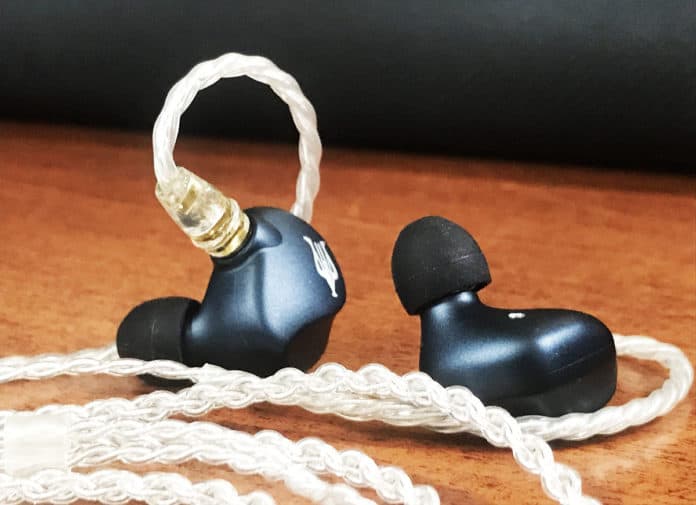This week I got a chance to spend some quality time with the long awaited Meze Audio Rai Penta! The Rai Penta has been undergoing research and development for three years, and at $1099, I wondered how it would compete with others in the price range. So is the Rai Penta right for you? And does it live up to the hype? Let’s take a closer look with this Meze Audio Rai Penta Review.
In the Box
-Meze Audio Rai Penta IEMs
-Detachable MMCX cable with 3.5 mm connector
-Eartips (silicone, foam, and 2-flange)
-Leather, zipping carrying case
-3.5 mm to 6.35 mm adapter
-Airplane adapter
-Cleaning tool
-Meze Audio stickers
-Documentation
Design
Look and Feel
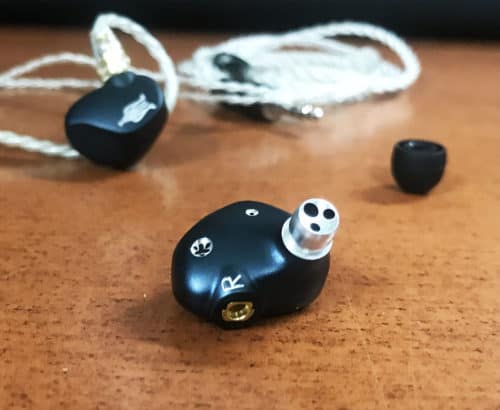
The Meze Audio Rai Penta is a mature, classy looking IEM. It has a navy blue anodized aluminum shell. On the outside, the aluminum peeks through via an etching of the Meze Audio logo. On the other side, a pressure equalization vent helps control how the sound flows through the metal tubes inside the housing. It looks and feels highly durable, yet maintains a lightweight structure.
Comfort and Fit
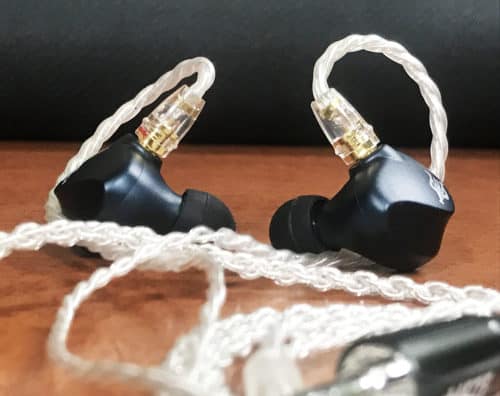
Meze Audio put a lot of effort into the research and development into the fit of the Meze Audio Rai Penta. The shape of the IEM follows the contours of the ear, and fits well in my relatively small ears. Additionally, it is a medium size, with tight, molded earhooks on its cable. These hooks help keep the IEMs in place. As a result they are super comfortable, and I forgot about them quickly.
Cable
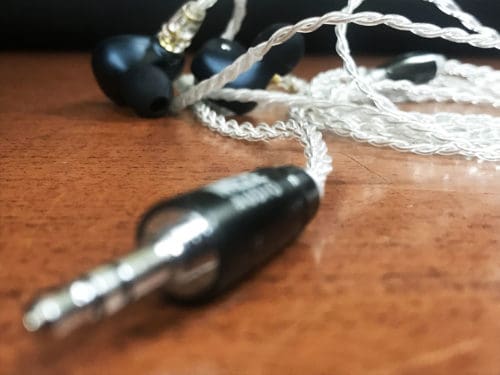
The cable of the Meze Audio Rai Penta connects to the top of the IEMs via an MMCX connector and terminates to a 3.5 mm connector. This litz style silver-coated copper cable has four wires (two per channel). Each one is made up of 20 litz strands! Additionally, the connectors are made of rhodium and are super strong and durable.
Drivers
The Meze Audio Rai Penta, as the name suggests, is made up of five drivers, two dual balanced armature drivers and one dynamic driver. Their positioning combined with the metal sound tubes mechanism assures the frequencies to maintain phase coherence.
Sound
Low Frequencies
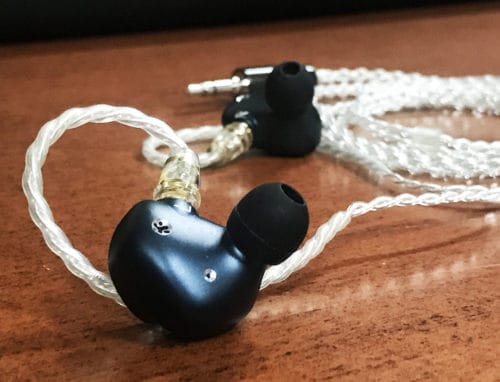
The low frequencies of the Meze Audio Rai Penta sound natural and harmonically complex. A boost in the sub region around what sounded like 40 Hz gives it feeling and extension. Additionally, in a general sense, the lows have a full, yet detailed response. As a result, kick drums, bass synths, and bass guitars have a feeling of bumped energy which contributes to the groove and emotional impact of low frequencies.
For example, when I was listening to the song Lazarus by David Bowie, the kick drum sounded a little bit louder in the mix than usual. It sounded deep and punchy with a wonderful sense of separation between it and the bass guitar. However, they maintained a feeling of cohesiveness, resulting in a wonderful feeling of groove.
Middle Frequencies
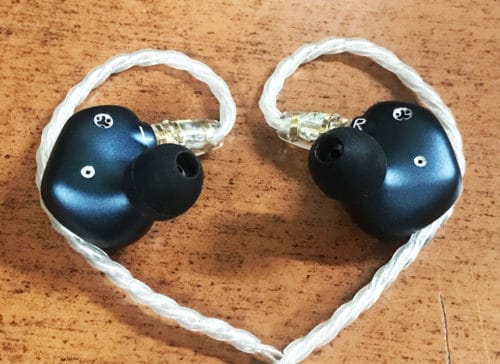
The middle frequencies of the Meze Audio Rai Penta is full, harmonically complex, and realistic sounding. A little boost in the low-mids around what sounded like 150 Hz provided a feeling of extra thickness to the sound, and gave emphasis to bass guitars, cellos, and the lows of pianos and organs power. Additionally, a boost around what sounded like 2 and 4 kHz provided both body and presence to vocals, emphasizing the chest, throat, and mouth of the vocal. As a result, vocals came through with emotional impact and realism. However, they were able to avoid harsh articulation by a cut around what sounded like 5 kHz.
For example, when I was listening to the song Born of a Broken Man by Rage Against the Machine, the bass guitar and electric guitars sound huge! However, neither sounded cloudy, and both actually had wonderful separation from each other even though they play a similar rhythmic pattern. Additionally, the lead vocal sounded accurately placed in the mix level-wise. It sounded full-bodied but also had a sense of articulation and clarity.
High Frequencies

The high frequencies of the Meze Audio Rai Penta had presence, texture, and a light feeling of extension. However, despite the sense of presence, they didn’t feel harsh or sibilant. A boost at what sounded like 6 kHz balanced well with a cut at 7 kHz. This shape provided clarity to attacks without making them feel overemphasized or unnatural sounding. Additionally, a boost at what sounded like 8 kHz provided texture and nuance to the harmonic complexities of percussion, cymbals, horns and strings. Finally, a boost at what sounded like 11 kHz provided air and breath to vocals, strings, and mixes as a whole.
For example, when I was listening to the song Quizas Quizas Quizas by Pink Martini, the highs of the shaker, guiro, and strings sounded accurately placed in the mix level-wise. However, they had a nuanced feeling of texture and extension. Additionally, the horns and strings felt present, yet wonderfully natural. Finally, on top of the entire mix was a subtle, yet emotionally impactful feeling of air. This airiness provided a natural and beautiful breath to the vocal and to the strings.
Soundstage
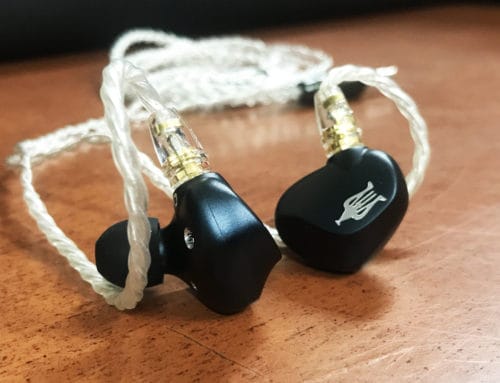
The soundstage of the Meze Audio Rai Penta has nuance, accuracy, and emotional impactfulness. Additionally, because of the fullness and spaciousness of the midrange, room mics and reverbs come through with clarity and detail. As a result, the overtones of roomy drums, vocals, horns, and guitars comes through accurately placed in space. In addition, the feeling of width of the IEMs, while not expansive, feels natural and has detailed differentiation. The length of wide-panned instruments contrasts strongly from those in the middle, with other instruments filling up the space in between without it feeling crowded. Lastly, the feeling of height has wonderful contrast because of the high and low frequency extension and the evenness of the frequency response as a whole.
For example, when I was listening to the song Good Life by Sammy Rae, the vocal and the wide panned electric guitars sounded intimate, yet natural. They contrasted wonderfully from the further-off-in-space drums and horns. In between those extremes, the strings and organ sat accurately. Additionally, the lows of the kick drum and bass guitar sat down below my chest and contrast wonderfully from the highs of the vocals, strings, and cymbals which felt up by the forehead. Lastly, the width of the guitars contrasted strongly from the bass guitar and lead vocal. In between those extremes, the horns, strings, and drums filled the space.
Overview

Overall, the Meze Audio Rai Penta is one of my new favorite IEM at this price range. It has a beautiful, harmonically complex, and natural sound with a little bit of a bass bump for extra impact. Additionally, it fits extremely easily in the ears and makes for a wonderful listening experience.
The Meze Audio Rai Penta is available for the best price here:
Meze Audio Rai Penta at Audio46 (enjoy $149 worth FREE-upgrade cable for a limited time)
MajorHiFi may receive commission through retail offers.
MAJORHIFI may receive commissions from retail offers.


